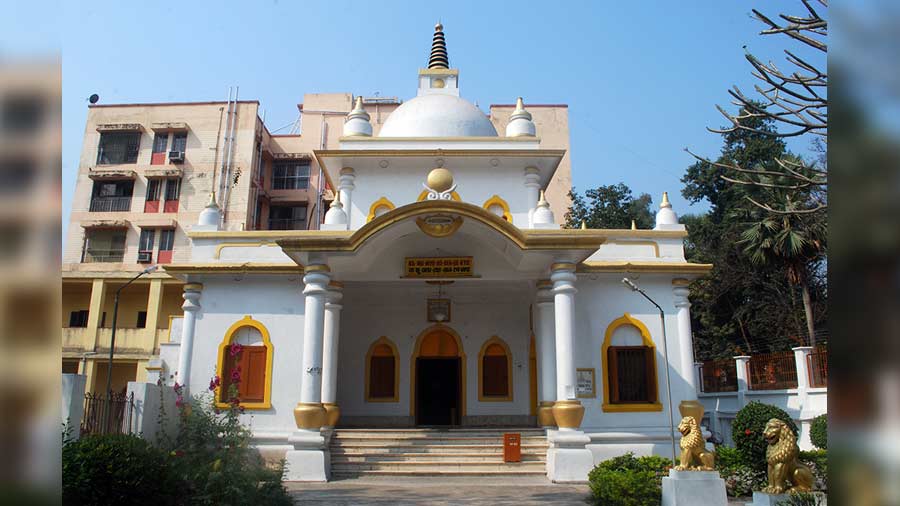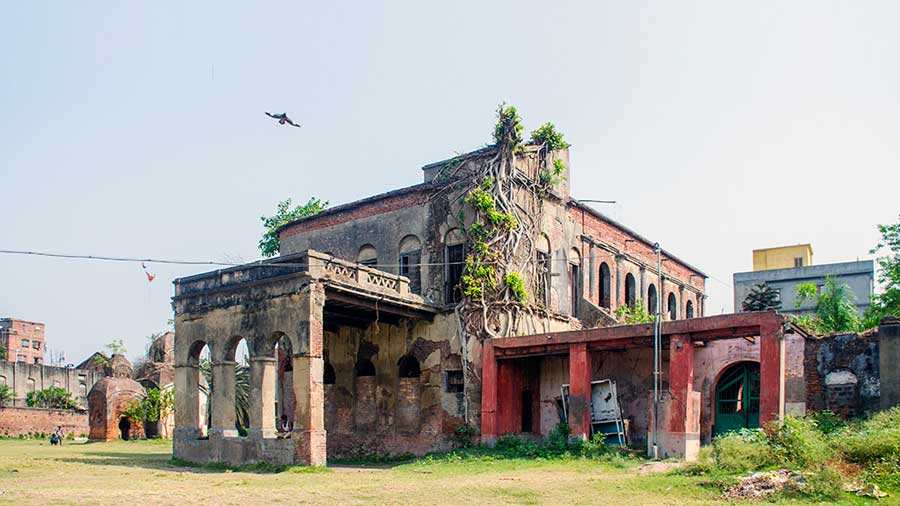Kolkata has always been a melting pot of different religions and cultures. The city has a sizeable Buddhist population and naturally, a number of Buddhist temples as well. Dhakuria’s Japanese Buddhist temple, the Nipponzan Myohoji, is perhaps the most elegant of them all. The temple is located on the eastern end of the Rabindra Sarobar, next to the Dhakuria flyover.
The temple was established by Nichidatsu Fujii (1885-1985), a follower of the Nichiren sect of Buddhism. Nichiren (1222-82) was a Japanese Buddhist priest and philosopher and a follower of the Lotus Sutra. The Lotus Sutra is a collection of teachings Buddha delivered towards the end of his life. Nichiren believed that the Sutra contained the highest truth of Buddhist teachings and was the sole means of attaining enlightenment. Legend has it that Nichiren once had a dream that the Lotus Sutra would be preached in India.
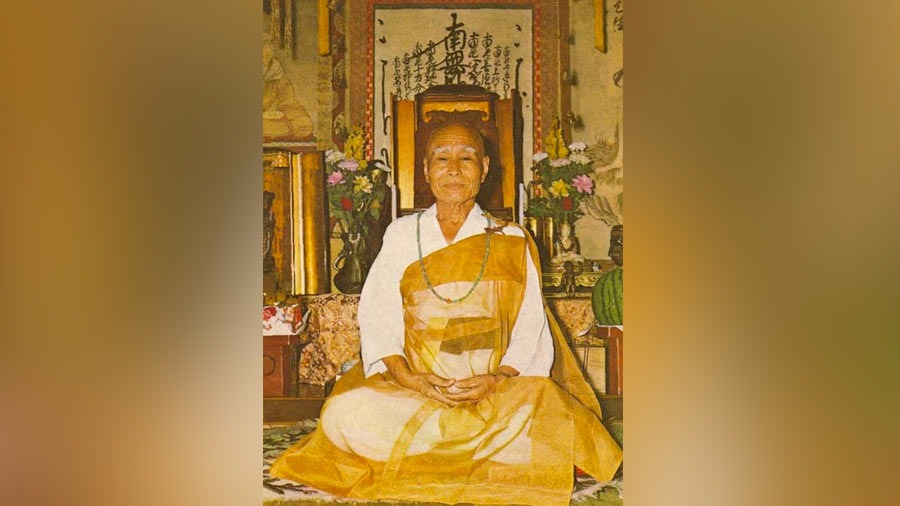
The temple was established by Nichidatsu Fujii (1885-1985)
Some 650 years after his death, his dreams were fulfilled with the help of his follower, Nichidatsu, who arrived in India in 1931. Four years later, he established the first Japanese Buddhist Temple in Kolkata. The temple was built on land donated by industrialist Jugal Kishore Birla, the son of Baldeo Das Birla.

The pillar at the entrance carries a Japanese message of peace
The entrance is flanked by an inscription that reads, “Na – Mu – Myo – Ho – Ren – Ge – Kyo.” It literally translates to “I take refuge in the wonderful law of the Lotus Flower Sutra.” The temple is housed inside a complex, complete with a landscaped garden along with monk and staff quarters. The two-storied, milky-white building features some eye-catching golden borders and is topped with a dome resembling the Sanchi stupa. At the corner of each tier, there are similar smaller stupas. There is an extended portico and a smaller flight of stairs leads to the interior of the temple.
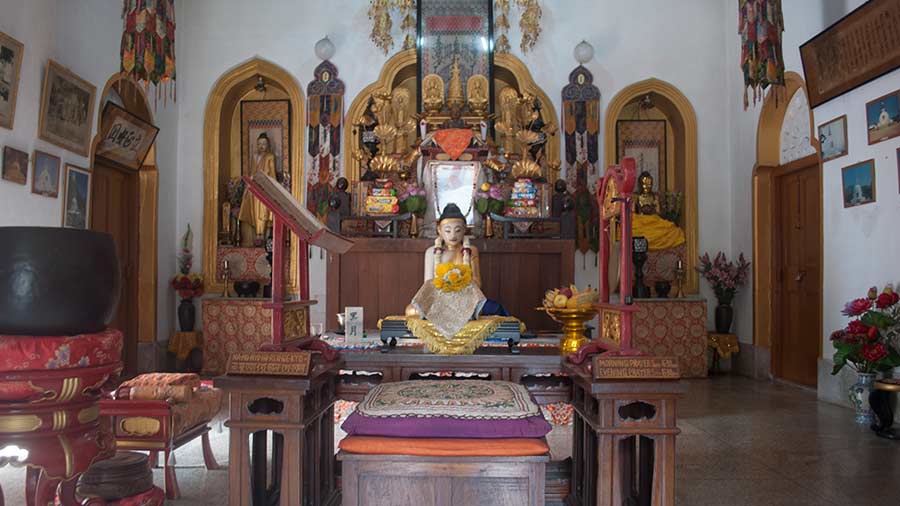
A marble Buddha sits inside the temple
A marble Buddha sits at the altar, which is richly adorned with colourful fabrics, brass lamps and food offerings. The interior is decorated with beautiful wall hangings and colourful lampshades along with Japanese calligraphy. Also on display is a photograph of Nichidatsu Fujii, the founder of the temple. The garden contains a pillar with a golden Japanese inscription carrying a message of peace. The pillar is guarded by a pair of golden lions.
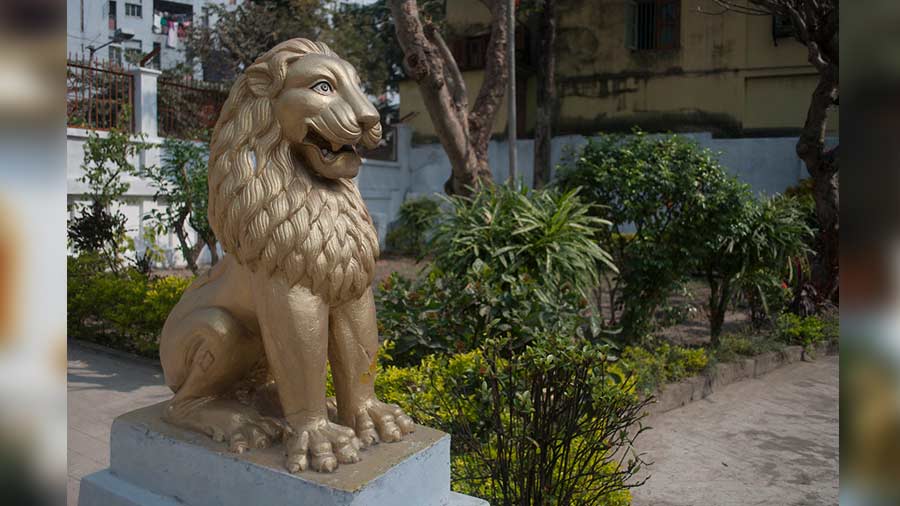
The temple’s entrance is flanked by a lion
Today, locals prefer to call it the Buddha Mandir. It is run by monks from northeast India and regular services are held in the morning and evening. The morning services are held from 5am to 6.30am, while the evening services are held from 5pm to 6.30pm and people of all faiths are welcome and free to attend the service.
Rangan Datta is a mathematics and management teacher by profession and a travel writer and photographer by passion. He has been addicted to discovering off-beat places since his undergraduate days at St. Xavier's College. Blogging and contributing to Wikipedia are his other passions.
